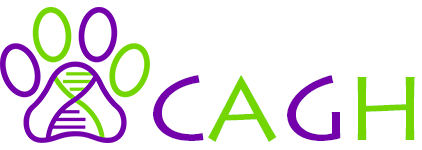Authors Åke Hedhammar 1,2 Linda Andersson 2, Sofia Malm 2, Helena Skarp 2, Anne-Sofie Lagerstedt 1
Affiliations 1) Department of Clinical Sciences, Swedish University of Agricultural Sciences, Uppsala, Sweden 2) The Swedish Kennel Club, Box 771, SE-19127 Sollentuna, Sweden.
Presentation Type Poster
Abstract
The poster is reviewing Swedish actions to improve health issues related to Brachycephalic Obstructive Airway Syndrome (BOAS) and handling the increased attention and awareness of the syndrome.
These actions are
- forming of working groups composed of various stakeholders, arranging conferences and production of educational material for breeders, judges and veterinarians (a,b).
- reviewing the epidemiology of BOAS in Swedish dogs by breed club health surveys and insurance data and focusing on a published report in Swedish (Lagerstedt et. al 2018) on 300 dogs operated at 12 clinics in Sweden during 2014-15-16 (including information on breed, gender, age, procedures performed and outcome) Improved diagnostic criteria and follow ups are proposed.
- initiating a Nordic inventory on the phenotypic and genotypic variation in four brachycephalic breeds – English bulldogs, French bulldogs, Pugs and Boston terriers
Aim To investigate if there is sufficient phenotypic and genotypic variation in four brachycephalic breeds to allow selection for a change in anatomy and thereby reduce the predisposition for Brachycephalic Obstructive Airway Syndrome (BOAS)
The project is based on “Breed” -gatherings – for dogs of various background arranged for by the breed clubs and supported by the four Nordic Kennel Clubs
Material. Data collection by breed on demography: gender, age, country of origin, measures: of weight, BodyConditionScore (BCS) and conformational measurements (i.e. width of Nares (WN), craniofacial ratio (CFR), neck girth ratio (NGR), photo in standardised position (whole body and skull)and surveying general and specific health conditions by a survey to owners and a veterinary examination (clinical data including BOAS)
Cheek swabs will be collected from each dog for genomic analyses
Analyses of data is intended to compare variation within and between breeds regarding age, gender, origin and the indicated measures
Out of all dogs described and sampled, 100 individuals of each breed from each country will be selected for more extensive studies across-breed quantitative trait locus. By performing genotyping using the Illumina high density 170K SNP array of around 400 brachycephalic dogs we will estimate the genomic variation in each breed.
- Control measures by a reporting form where deaths and performed surgical procedures regarding BOAS are registered as well as an obligatory puppy health certificate to be issued at time of delivery to a new home.
- The development of a screening procedure for evaluation of breathing capacity , thermoregulation and anatomical features relevant for breathing in adult dogs to initially be used and registered voluntarily but intended to serve in the future as a mandatory request for breeding animals.
- international collaborations on these issues with Nordic Kennel Clubs and the veterinary organisations (WSAVA / FECAVA) are described as well as Swedish involvement in the BOAS activities within International partnership for dogs( IPFD) and DogWellNet (c,d,e)
References
Hedhammar, Å and Lagerstedt A-S 2018. Surgical procedures performed in Sweden on brachycephalic dogs with BOAS. Svensk Veterinärtidning 70:3, 23-27 (in Swedish)
a) https://www.skk.se/globalassets/dokument/utstallning/special-breed-specific-instructions-a8.pdf
b) https://www.youtube.com/watch?v=kQ_3f4bLkME&feature=share
c) https://www.skk.se/globalassets/nku-en/documents/brachyreport.pdf
d) https://dogwellnet.com/content/hot-topics/brachycephalics/
e) http://www.fecava.org/en/press-release/press-release-1/vets-must-dare-to-speak-out.htm
